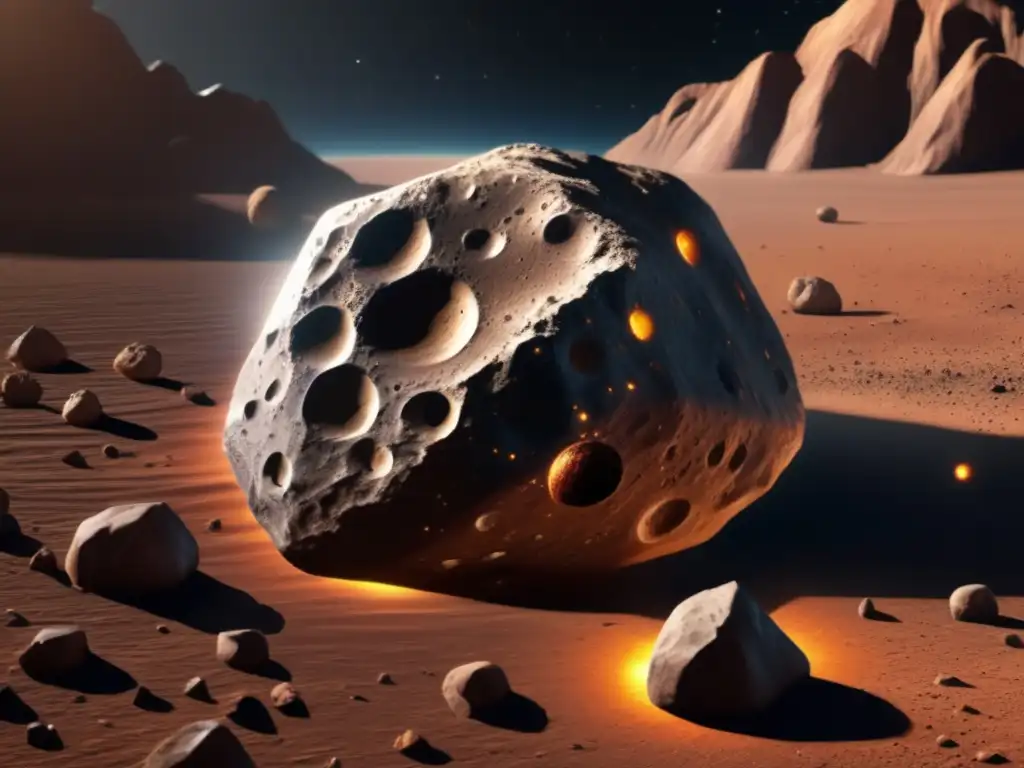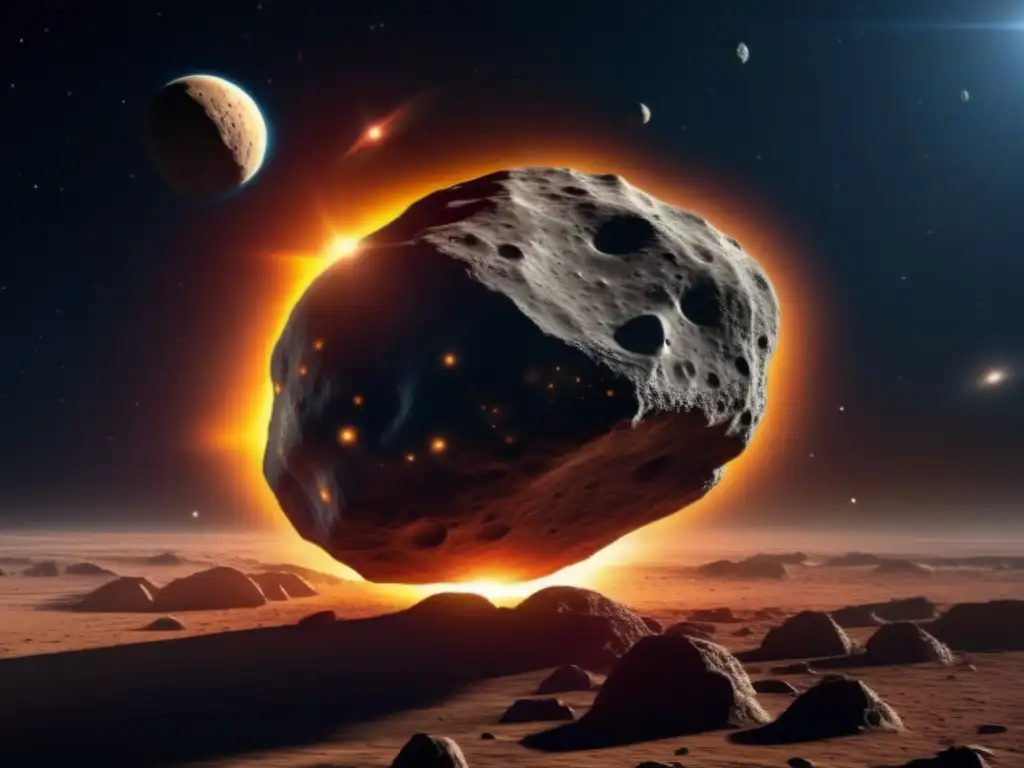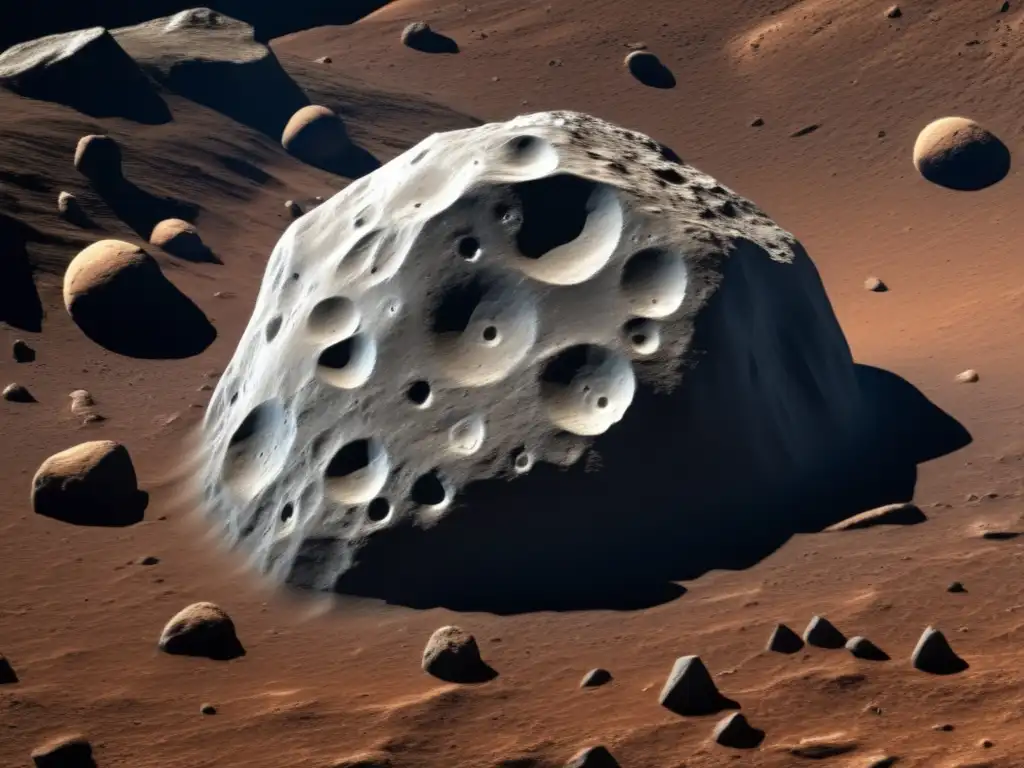The Unique Features Of Asteroid Palinurus

Introduction
Asteroids are fascinating celestial objects that have captured the attention of scientists and space enthusiasts alike. Each asteroid has its own unique characteristics and features that make it distinct from others in the vast expanse of space. In this article, we will delve into the world of asteroid Palinurus and explore its intriguing attributes.
Composition and Size

Mineral Composition
Asteroid Palinurus belongs to the C-group of asteroids, which are carbonaceous in nature. These asteroids contain high amounts of carbon, making them rich in organic compounds. Palinurus is composed primarily of silicate minerals, such as olivine and pyroxene, with traces of metals like iron and nickel. This composition suggests that the asteroid may have originated from the outer regions of the solar system.
Size and Shape
Palinurus has an estimated diameter of approximately 20 kilometers (12 miles). It has an irregular shape, resembling that of a potato or a rubble pile. This shape is common among smaller asteroids, as their weak gravitational forces prevent them from forming a spherical shape like larger celestial bodies.
Surface Features
The surface of asteroid Palinurus exhibits numerous impact craters, evidence of its long history in space. These craters vary in size and depth, providing valuable insights into the asteroid's interactions with other celestial objects. Some of the larger craters may have even resulted in the formation of smaller asteroids or fragments.
Orbital Characteristics

Orbit and Distance from the Sun
Asteroid Palinurus follows an elliptical orbit around the Sun, with an average distance of approximately 2.7 astronomical units (AU). One AU is equivalent to the average distance between the Earth and the Sun. The eccentricity of Palinurus' orbit indicates that it can come relatively close to the inner planets, such as Mars and Earth, during certain points in its orbital path.
Rotation Period
The rotation period of asteroid Palinurus refers to the time it takes for the asteroid to complete one full rotation on its axis. Based on observations, Palinurus has a rotation period of approximately 11 hours. This relatively short rotation period suggests that the asteroid has a moderately fast spin.
Trojan Asteroid Status
Palinurus is classified as a Trojan asteroid, specifically of the L4 group. Trojan asteroids are designated as such when they share the same orbit as a larger celestial body, such as a planet or a moon, while maintaining a stable position called a Lagrange point. Palinurus is in a stable Lagrange point in Jupiter's orbit, sharing its path with many other Trojan asteroids.
Potential Scientific Significance

Study of Primordial Material
Due to its carbonaceous composition, asteroid Palinurus is believed to be rich in primordial material dating back to the early stages of the solar system. By studying this asteroid and analyzing its composition, scientists can gain valuable insights into the origins of organic molecules and the conditions that led to the formation of life on Earth.
Source of Meteorites
Asteroids like Palinurus can also serve as potential sources of meteorites. When these asteroids collide with other celestial bodies or experience significant disruptions in their orbits, fragments can break off and enter Earth's atmosphere as meteoroids. Studying the composition and characteristics of these meteorites can provide valuable data on the history and evolution of our solar system.
Implications for Planetary Defense
Understanding the orbital characteristics and potential impact hazards posed by asteroids like Palinurus is crucial for planetary defense efforts. By analyzing its trajectory and monitoring its movements, scientists can better predict any potential future encounters between this asteroid and Earth, allowing for the development of strategies to mitigate the risk of impact.
Frequently Asked Questions

-
What is the composition of asteroid Palinurus?
Asteroid Palinurus is primarily composed of carbonaceous minerals, such as silicates, olivine, and pyroxene, with traces of metals like iron and nickel.
-
What is the size of asteroid Palinurus?
Asteroid Palinurus has an estimated diameter of approximately 20 kilometers (12 miles).
-
What is the rotation period of asteroid Palinurus?
Asteroid Palinurus has a rotation period of approximately 11 hours.
-
What is the significance of studying asteroids like Palinurus?
Studying asteroids like Palinurus provides insights into the early stages of the solar system, the origins of organic molecules, and the potential impact hazards they pose to Earth.
-
How does asteroid Palinurus contribute to planetary defense efforts?
By monitoring its orbit and studying its trajectory, scientists can better predict any potential future encounters between this asteroid and Earth, allowing for the development of strategies to mitigate the risk of impact.
Conclusion
Asteroid Palinurus offers a wealth of scientific information and serves as a valuable resource for understanding the formation and evolution of our solar system. Its unique composition, shape, and orbital characteristics make it an intriguing subject of study for scientists and researchers. By unlocking the mysteries of asteroids like Palinurus, we gain a deeper understanding of the universe and our place within it.
Share your thoughts and engage with the asteroid community on the Asteroid Realm website. Don't forget to subscribe and share this article on social networks to spread the knowledge about asteroids and their significance. Thank you for joining us on this cosmic journey!
Additional Resources

For more information about asteroids and their profiles, please visit the following resources:
 Discovering The Scientific Importance Of Asteroid Nisus
Discovering The Scientific Importance Of Asteroid Nisus Asteroid Euryalus: The Story Behind The Name
Asteroid Euryalus: The Story Behind The Name Delving Into The History Of Asteroid Capys
Delving Into The History Of Asteroid CapysIf you want to discover more articles similar to The Unique Features Of Asteroid Palinurus, you can visit the Asteroid Profiles category.
Leave a Reply

Articulos relacionados: